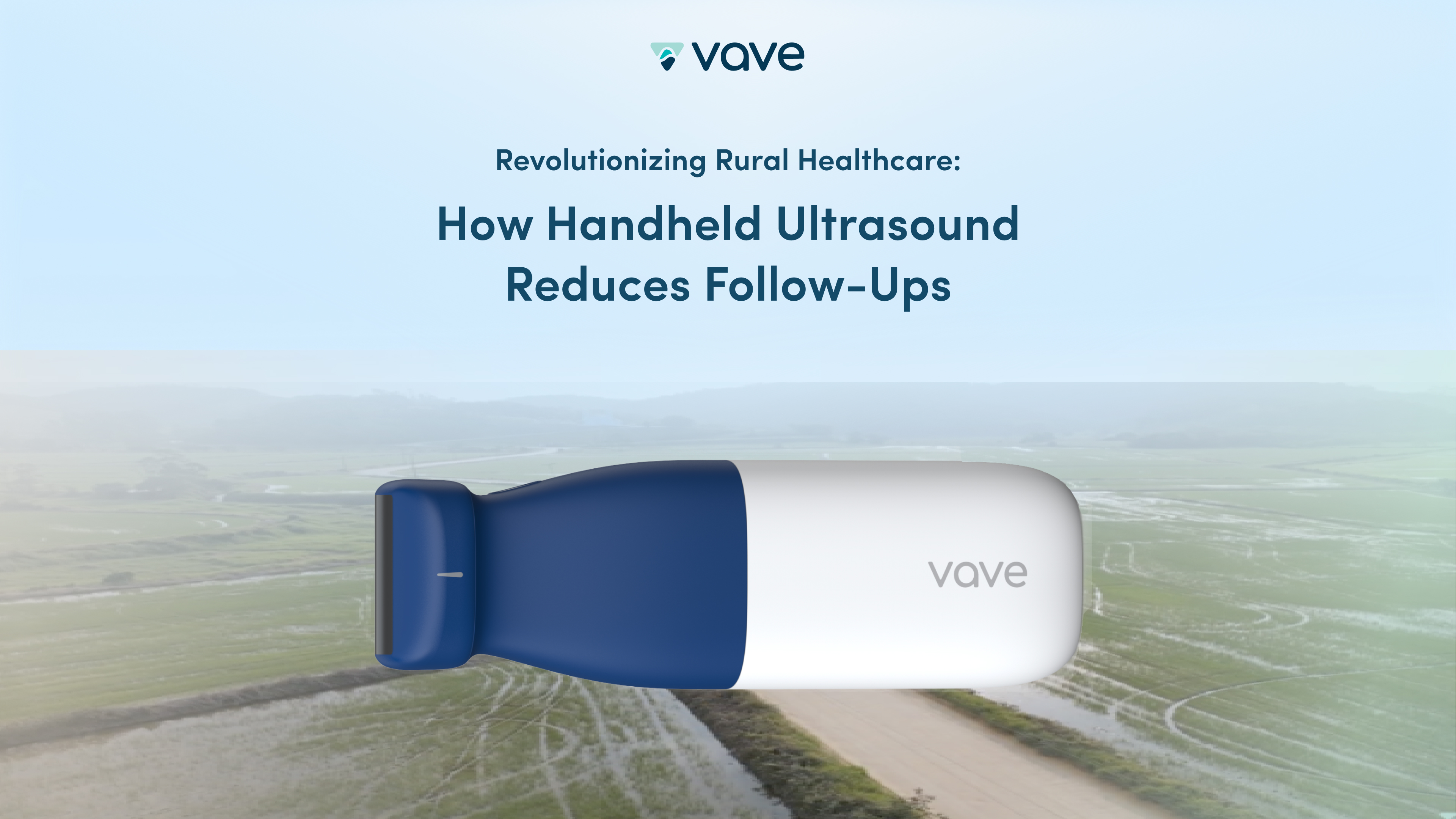Rural healthcare patients already face limited access to imaging technology, but the situation worsens when tests fail to answer physicians’ questions. Research suggests roughly 1 in 12 noninvasive healthcare exams are inconclusive – often leading to more secondary tests, higher longer-term costs, and even more travel and complications for rural patients.1
These scenarios can be mitigated using point-of-care ultrasound (POCUS) to generate images faster, evaluate their results, and run further scans when necessary – and this article explores how that works.
Why Follow-Ups Are Harder for Rural Patients
While 20% of Americans live in rural locations, only 9% of the country’s physicians serve those communities.2 Estimates suggest 80% of rural counties are “medically underserved,”34 driven by several key factors:
- Physician Shortages: The industry-wide talent crunch is felt more acutely in rural areas, with more than 90% of rural counties facing shortages of primary care physicians – along with a notable scarcity of many other specialist providers, such as mental health professionals and maternal health specialists.5
- Financial Struggle: Rural healthcare providers often rely heavily on Medicare and Medicaid contracts that fail to recoup the cost of care.6 Such financial burdens – combined with the impact of COVID-19 and low healthcare utilization – have left more than 30% of rural hospitals at risk of closing.7
- Travel Burdens: Rural patients must travel 2x further than patients based in urban locations to their nearest hospital.8 Longer commutes make visiting the doctor more challenging, with patients often needing to arrange time off work or extra childcare. Equally, many rural patients lack access to transportation and may not even be able to leave their homes.
As a result, many patients struggle to access routine imaging technology. “In rural communities, folks don’t necessarily have access to state-of-the-art equipment—the CT scanners, MRIs—that you might need to diagnose certain things,” Dr. Suzanne Judd says.9 The results of this are clear: lower utilization of preventive care, higher levels of chronic disease, and higher mortality.10
But what happens when they do travel all that way to undergo a CT scan or X-ray – and the scans are inconclusive or of poor quality?
Patients are left waiting for answers and cannot access expedient follow-up appointments. Diagnosis is slowed, care is delayed, and outcomes suffer. Yet these structural issues are being addressed by a new generation of point-of-care ultrasound (POCUS) technology.
How Handheld Ultrasound Delivers Answers Faster in Rural Healthcare Settings
POCUS devices empower physicians to generate high-quality images in many areas of anatomy – helping to avoid more expensive and invasive techniques such as CT scans or X-rays. Proven to accelerate diagnosis and reduce wait times,11 POCUS provides vital support for monitoring ongoing conditions.
Better still, POCUS can dramatically reduce the need for unnecessary invasive procedures or follow-up scans. The speed and relatively low cost of POCUS scans mean images can be assessed quickly – and scans can be re-run if necessary to get the information needed.
This helps rural physicians:
- Reduce Travel: Save patients unnecessary travel by reducing the need for follow-up scans. POCUS can even unlock at-home diagnostics for patients who may be unable to move or access transportation.
- Improve Patient Care: POCUS helps to accelerate care and give patients answers faster, likely leading to more effective care and a better overall patient experience.
But these benefits depend on the design of the POCUS device. For example, some systems still require cords, which can limit ease of use in certain settings—especially outside of a traditional clinic. Vave Health addresses this with a truly cordless experience designed for maximum flexibility.
Our POCUS devices are simple, portable, and affordable for rural physicians. Their cordless design and seamless integration with our digital platform enable you to:
- Visit patients in any location and generate high-definition images
- Collaborate instantly with colleagues to triage patients and coordinate care
- Simplify documentation to make billing easier and reduce your administrative burden
All of this helps unlock faster access to imaging for rural populations – and transforms how rural physicians approach both diagnostics and ongoing care.
Want to reduce unnecessary follow-ups and improve patient care?
Book a Demo
__
References:
- https://www.ncbi.nlm.nih.gov/pmc/articles/PMC7153546/#:~:text=Clinical%20Summary&text=The%20current%20study%20sought%20to,further%20investigation%2C%20as%20clinically%20appropriate.
- https://rsmus.com/insights/industries/health-care/rural-health-care-delivery-is-evolving.html
- https://www.naco.org/articles/medical-programs-send-budding-doctors-rural-county-%E2%80%98healthcare-deserts%E2%80%99
- https://www.ajmc.com/view/5-specialty-care-shortages-in-rural-communities
- https://www.aha.org/testimony/2023-05-17-aha-statement-senate-finance-subcommittee-rural-health-care-access
- https://www.shiftmed.com/insights/knowledge-center/rural-healthcare-financial-crisis-strategic-solutions-for-health-systems/
- https://www.aha.org/news/headline/2018-12-14-study-rural-residents-travel-about-twice-far-hospital-average#:~:text=Study%3A%20Rural%20residents%20travel%20about%20twice%20as%20far%20to%20hospital%20on%20average,-Dec%2014%2C%202018&text=Rural%20Americans%20live%20an%20average,by%20the%20Pew%20Research%20Center.
- https://newsinhealth.nih.gov/2022/03/health-rural-america
- https://pmc.ncbi.nlm.nih.gov/articles/PMC11273699/
- https://pmc.ncbi.nlm.nih.gov/articles/PMC9301985/













.webp)
.svg)
.webp)
.svg)





.svg)

.svg)
.svg)
